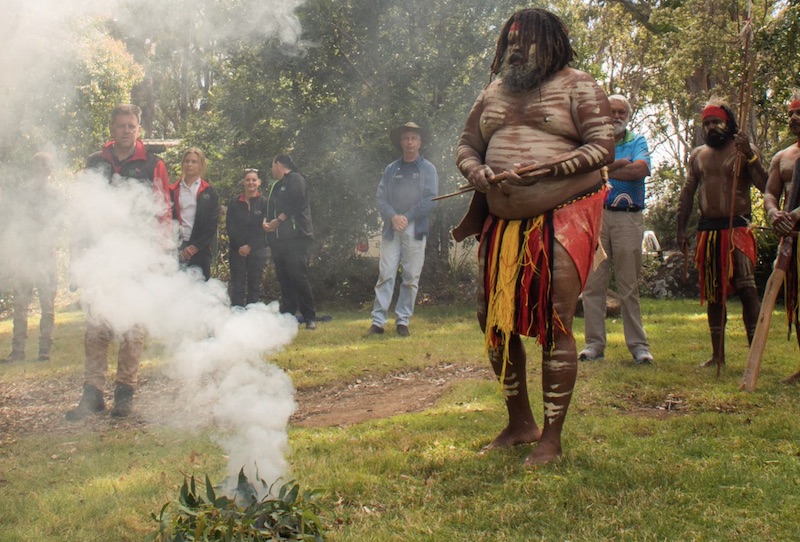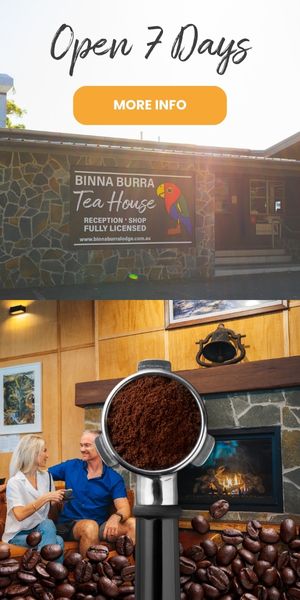Known as ‘Woonoongoora’ in the Yugambeh language, the mountains of Lamington National Park are sacred and spiritual, places to be nurtured and respected.
On Sunday 8 September 2019, the historic Binna Burra Lodge and pioneering timber cabins were destroyed in bushfires.
One year later, on Tuesday 8 September 2020, a traditional smoking and healing ceremony was undertaken at Binna Burra by representatives of the Yugambeh[1] aboriginal language group.
It also signalled the start of a Reconciliation Action Plan (RAP) process for the new, post bushfire era of Binna Burra.


‘Developing a Reconciliation Action Plan for Binna Burra and our cultural landscape is just the first step in or reconciliation journey’ said Steve Noakes, Chairperson of Binna Burra Lodge Limited. ‘At Binna Burra we will respect and champion the rights of First Australians. We know reconciliation is an ambitious goal and we’re committed to a continuous learning-by-doing process.’
Noakes added: ‘For us here at Binna Burra, reconciliation is about strengthening relationships between Indigenous peoples and non-Indigenous peoples, for the benefit of all those who visit this place inside the Lamington National Park where rugged landscapes are the remnants of an ancient landscape that reaches back into the Earth’s history, some 300 million years[2]
The RAP process at Binna Burra provides a framework to support the national reconciliation movement. Noakes said: ‘We commenced with a scoping reconciliation undertaken through a ‘Reflect RAP’ which has set out the steps we are take to prepare Binna Burra for reconciliation initiatives in successive RAPs. This first stage has enabled time scoping and developing relationships with the relevant Aboriginal stakeholders and deciding on our vision for reconciliation before committing to specific actions or initiatives. Now we have a process to produce future RAPs that are meaningful, mutually beneficial and sustainable.’
Former Binna Burra Board member, Lisa Groom, the grand-daughter of Binna Burra co-founder, Arthur Groom (1904 – 1953) is playing a leading role in the Binna Burra RAP Working Group.
‘The Binna Burra Cultural Landscape is located within the Lamington National Park, where we walk in the remnants of an ancient Gondwana landscape’ said Lisa Groom.
‘We have an obligation to serve past, present and future generations and the land herself. After developing the RAP, there remains many years ahead for continuous improvement. This is an important step on our reconciliation journey taking us well into the next 100 years of Binna Burra’s unique role in Australian nature-based tourism experiences.’
End
Contact: Steve Noakes. [email protected] Tel: 0418774295
[1] The Yugambeh family groups are identified as the Wangerriburra, Birinburra, Gugingin, Migunberri, Mununjali, Bollongin, Minjungbal and Kombumerri. They shared language, ceremonies, celebrations and economic exchange. (Source: https://parks.des.qld.gov.au/parks/lamington/about/culture)
[2] The geological story of the Lamington area started during the Palaeozoic Era (more than 225 million years ago) when the single land mass called ‘Pangea’ separated into two super continents: Laurasia and Gondwana. The present-day continents of South America, Africa, Australia and Antarctica, along with India, New Zealand, New Guinea, Madagascar, Arabia and other parts of the present Middle East made up Gondwana. (The name ‘Gondwana’ or ‘Forest of the Gonds’ came from an area in Northern India, which in ancient times was home to a people called ‘Gonds’.) https://parks.des.qld.gov.au/parks/lamington/about/culture











